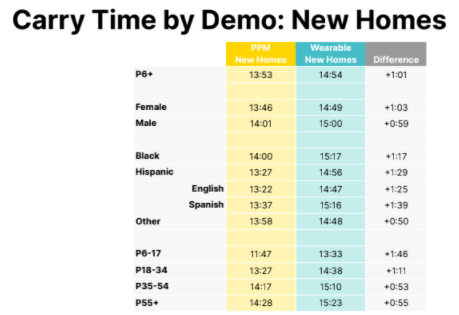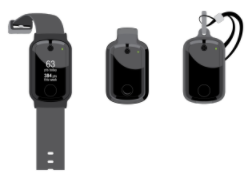Across the advertising industry, the desire for the most accurate audience measurement data, and tools, has been highly vocalized. This has included verbal disillusionment in Nielsen. The same can be said of television advertising-focused advocacy group VAB, and such entities as the massive NBCUniversal, which has shunned Nielsen currency for its 2022 Upfronts.
With Nielsen accepting a buyout offer from a consortium of investors led by a former dissident, Elliott Management Corp., while still in a “go-shop” period, proving to the media and marketing worlds that its ratings-generation products are superior to all comes remains paramount.
On Thursday, Nielsen shared that its new wearable Portable People Meters, or PPMs, are reliable. And, they will be heading to panelists by the end of 2022.
As first reported by Streamline Publishing’s Radio Ink, Nielsen shared in a client presentation on the final day of Q1 2022 that, following a “gauntlet” of multi-year testing, its new wristband, clip and pendant work. As such, 50%-75% of its PPM panel should be equipped the more fashionable wearables by the end of 2022.
It’s a long time coming, and they’ll effectively replace the PPM as we’ve known it for more than 15 years: A device resembling a pager circa 1995 with a docking station in need of an internet connection.
As Nielsen shared in the Thursday client presentation, the wearable PPMs “increased meter wear time and had comparable tuning levels” with the current device.
They also shared that the wearables are not only easier to wear, but are more appealing to those in particular demographics with lower compliance.
The testing involved new households, plus panelists that date to 2018, when iterative and continuous testing at Nielsen began. Some 400 new homes with a goal of landing 1,000 panelists were recruited, along with 800 existing households with a target of 2,000 panelists. A significant percentage of both groups agreed to participate.
As Nielsen notes, the data from the subset panel showed them that panelists spent more time with the wearables.
 In addition to the wearable devices, panelists will receive a beacon and docking hub — necessary devices that will transmit the data back to Nielsen. The panelists are also being encouraged to download a companion app that increases the amount of data sent back. In the younger demographics, where there is increased competition for app space on phones, Nielsen is working on ways to increase downloads to this demographic group.
In addition to the wearable devices, panelists will receive a beacon and docking hub — necessary devices that will transmit the data back to Nielsen. The panelists are also being encouraged to download a companion app that increases the amount of data sent back. In the younger demographics, where there is increased competition for app space on phones, Nielsen is working on ways to increase downloads to this demographic group.
Nielsen Audio Principal Data Scientist Erin Wittkowski has served as the team leader for this project and led the majority of the client presentation. Wittkowski said the testing showed that the wearables had higher carry and off-dock times across demos and the wearable panelists had higher audio in-tab trends consistent across demographic groups.

The biggest takeaway from the data? The subset of panelists used in the testing confirmed there was minimal difference in tuning with the introduction of the wearables. As such, Wittkowski said, the technology “worked as expected.”
Nielsen Audio Managing Director Brad Kelly was also present, and he shared that the PPM wearables are a major step forward for Nielsen and the evolution of audio measurement.
Still, getting younger consumers to participate may remain Nielsen’s biggest challenge. Intriguingly, Nielsen’s 35-page presentation deck featured a flowery quote about the benefits of the new meters from a 68-year-old woman, rather than someone from the key 18-49 demographic.
Among the other major takeaways from the introduction of PPM wearables are longer undocking and docking periods.

Then, there is the multicultural panelist story, which is improving.

As shown above, Blacks and Hispanics have shown significant increases in PPM use as wearables became available. In particular, Hispanics who prefer to use Spanish experienced the highest jump — a good sign that broadcasting companies with Spanish-language radio stations may be less critical of how Nielsen generates ratings data for such AMs and FMs.
— Reporting by Ed Ryan, with additional reporting by Adam R Jacobson





